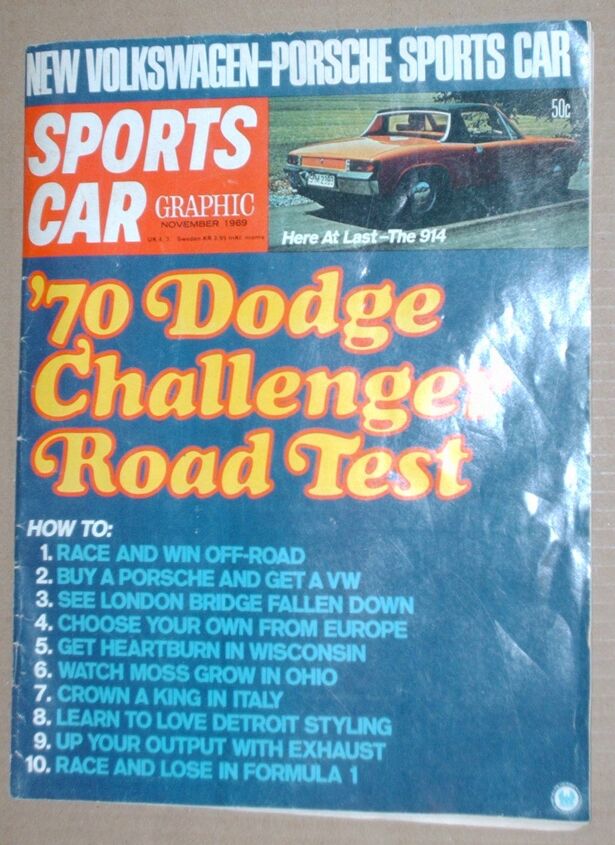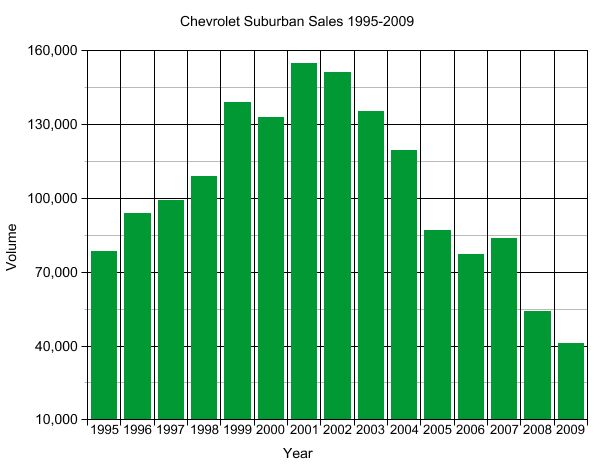#History
A National Treasure: The Detroit Public Library's National Automotive History Collection
Occasionally, when talking to other car folks, I’ll hear, “well, you live in Detroit”. It can mean different things. Sometimes it’s an accusation of jingoist bias in favor of the domestic automakers. I plead guilty in not wanting to see lots of my neighbors and customers unemployed. Other times, it’s more wistful, more envious. For a car guy, Detroit can be Mecca and nirvana on Christmas morning with a cherry on top. I don’t have to fly in for press events at the Big 3 and because there are so many automotive writers around here, even the foreign brand press fleet is stocked pretty nicely.
Though not as common as they once were, you can still take a factory tour at Ford’s [not quite so] giant [anymore] Rouge complex, and while you’re in Dearborn it’s definitely worth your while to visit the Henry Ford Museum. Just one note, you won’t find it listed under that name. A few years ago, for some insane marketing reason, the Henry Ford Museum & Greenfield Village decided to rebrand itself, choosing “The Henry Ford”. I suppose that goes over big with museum curators – I’m sure that everyone in Manhattan knows what the Guggenheim is, but in a region that has hospitals and schools named after Henry Ford (I & II), dropping Museum from the eponymous Henry Ford, is just confusing and a little too precious.
GM's Own Turbine Car Program
No, Virginia, that’s not a turbo Eldo, that’s a turbine Eldo
Paul Niedermeyer’s article and more recent book review concerning Chysler’s Turbine car show that Chrysler was savvy to use it as a halo vehicle – its appeal continues to resonate today. Though we’re learning new details all the time, most car enthusiasts know that Chrysler made a turbine powered car in the 1960s. Less well known is the fact that General Motors also had their own turbine program. While Chrysler’s Turbine Car was mostly a short lived PR effort, it happens that GM had a much longer lasting automotive turbine development program, starting in the 1950s and lasting for at least 40 years, without ever coming anywhere near to production. TTAC commenter jmo, alerted us to the existence of a powdered coal fired turbine powered Eldorado that GM developed after the oil crises of the 1970s, and we were hooked.
Who's Your Daddy, Mustang?
There’s an old Russian saying, “success has many fathers while failure is an orphan”. The automotive world has plenty of examples of that. Perhaps a half dozen Italian designers have taken credit for the Lamborghini Miura. Zora-Arkus Duntov is often called the “father” of the Corvette, even though it was seeing the already in production Corvette on display at the 1953 Autorama in New York City that inspired Duntov to write Ed Cole asking for a job as an engineer at Chevy in the first place.
Another case of mistaken automotive paternity is the Mustang. If you asked 100 auto enthusiasts the question, “who originated the idea of the Ford Mustang?”, most would say Lee Iacocca. After all, he made the cover of Time magazine when the original 64 1/2 was such a hit. When you type in Iacocca, Google autosuggests “iacocca mustang”. He’s even sold Iacocca signature editions of the ‘Stang. Sometimes Ford product manager Donald Frey, who passed away earlier this year, is given the credit for the Mustang’s concept. While Frey was a staunch advocate for the sporty four-seater, selling the idea to Iacocca and shepherding it past resistance from Henry Ford II, it turns out that he wasn’t the originator of the idea. In fact, as Robert Cumberford explains, the idea didn’t even start at Ford, or even a car company, it was the idea of ad man Barney Clark, and he pitched it first to General Motors, not Ford.
The Cobra And The Cheetah: A Muscle Car Tale (Part Two)
Part One of this piece can be found here.
Were it not for an act of God, the fecklessness of General Motors’ executives and the difference between a self-promoting Texan and a Californian willing to walk away from it all, the many Cobras you see, real and ersatz, would be joined by another predator, Bill Thomas’ Cheetah.
Developed with backdoor assistance from Chevrolet, the Cheetah was the Chevy powered answer to the “Powered by Ford” Cobra. A racing Cheetah was given one of the first Gen IV big block 396 Chevy “rat” motors made. Based around Corvette drivetrain and suspension components, and a not very robust tube frame, the Cheetah was covered in a body that is unforgettable.
Though the Cheetah only competed in a small number of SCCA races, winning 11 events while simultaneously developing a reputation for extreme speed but treacherous handling (caused by the flimsy chassis), its drop dead gorgeous body styling made it instantly memorable. The fact that the Cheetah came out in the mid 1960s, when scale models and slot car racing were hugely popular with teen baby boomers, didn’t hurt the car’s popularity.
The Cobra And The Cheetah: A Muscle Car Tale (Part One)
The Shelby 427 Cobra is a curious car. There are few vehicles that more worthily deserve the description iconic. The originals are so historically significant and rare that each is worth hundreds of thousands of dollars (and in the case of the six Daytona Coupes, millions), yet stylistically identical replicas are ubiquitous. Chances are, if you see a Cobra, it’s probably not real baby seal. Over the decades thousands of replica Cobras have been produced to varying degrees of fidelity by a variety of kit car and turnkey manufacturers. When Carroll Shelby realized that he couldn’t sue the replicar makers into submission, he decided to make his own “continuation series” Cobra replicas (in your choice of carbon fiber, fiberglass or original aluminum bodies). He’s also come to a licensing agreement with Superformance, who make superb Cobra and Daytona Coupe reproductions. I’m a big supporter of the idea of intellectual property, and Ol’ Shel is entitled to make a living off his name and accomplishments, but Carroll Shelby’s proprietary attitude towards the Cobra borders on the absurd.
The "Brand Savior" Rover 55 That Was Never Built
Magazine Memories: Dreams Of Delorean
TTAC readers, the Best and the Brightest, seemed to have liked the first Magazine Memories so I started to sort and organize the boxes of old buff books in the basement, with an eye towards another column for you guys. The first piece was about a Sports Car Graphic from 1969, a golden age for both performance cars and auto racing. I thought it would be interesting, by way of contrast, to look at an era of less worthy automobiles, the “malaise era”, so named because of a speech given by Jimmy Carter during his presidency that attempted to address a sense of national lethargy. Though Carter never actually used the word malaise, the tag stuck. Looking at magazines from the middle of the Carter years, the winter of 1980-81, though, the cars were so boring and mediocre that I thought it’d be too much of a challenge to even joke about how boring and mediocre they were.
Farewell Mercury
If you scan the autoblogosphere on a regular basis, you’ve read some half-hearted eulogies to the best and worst of Mercury. Fair enough, as the Mercury brand deserves every one of those backhanded compliments: sharing too much content with a comparable Fords and (sometimes) sharing too many styling cues with the Lincolns means it couldn’t die off without a dig or two. And it is an easy target: aside from the (lead-sled) post war Yuppie clientele that inspired Mercury’s creation, the original sleeky-Sable and a few old Cougars, this was bound to happen.
But obviously my love for Mercury ( here, here, and here) means I’m not going to bury Mercury, but to praise it. And to make sure the brand remains in our collective consciousness just as long as it’s GM counterpart, Pontiac. Wishful thinking, Mehta?
Magazine Memories: Sports Car Graphic, November 1969
In the basement are boxes of historic newspapers and old car magazines that I’ve saved since the late 1960s. The oldest items date to the Detroit Tigers’ 1968 World Series victory and the Armstrong/Aldrin moon landing the following year. The automotive publications are mostly from the early 1970s through the late 1980s, primarily Road & Track and Car and Driver from the US and CAR from the UK, plus a few odds and ends.
While looking for the newspapers on the moon landing I came across the November 1969 issue of Sports Car Graphic. SCG’s content was aimed more at the string-back glove set and road racing fans than Robert Peteresen’s other titles like Hot Rod & Motor Trend. I guess SCG was staking out a niche between C&D and Autoweek. I believe that TTAC contributor, Stephan Wilkinson was an editor at Sports Car Graphic during the 1970s so perhaps he can give us some historical background on the publication.
Picking up and reading a 40 year old car magazine evokes a range of thoughts and feelings. The physical object is both an artifact as well as historical source material. Certainly there’s a sense of nostalgia, as well as curiosity to look at the table of contents for cool cars. You read an old magazine differently than you’d read one that came through your mail chute today. If you still subscribe to C&D or R&T, you flip past the TireRack ads as fast as you can. With an old magazine you savor even the advertising copy, wondering if IECO still makes Corvair parts or even exists. Thinking Francophonically, there is an enduring sense not of déjà vu but rather of plus que change.
What's Wrong With This Picture: Checker Handles Like It's On Rails Edition
Cadillac And The Mark of Leadership
Cadillac’s new ad campaign, with the tag line “The Mark of Leadership”, has received mixed reviews. Some have questioned the use of the word “mark” because it may evoke a model name long used by luxury competitor Lincoln. Others have said that the mark itself is in question, the Cadillac wreath and crest logo, is itself tainted by association with tacky blinged out Escalades of questionable aesthetic taste. Those points may be valid, but I think that there’s a more troubling problem with the slogan and that has to do with Cadillac’s heritage.
The Rise And Fall Of The Suburban
Considering the Suburban so essentially captures the tenuous line between myth and reality in American life, it’s a pity we don’t have 75 years of sales data to put some hard numbers behind the nameplate’s 75 years of history. Luckily, our data does go back to 1995, when America’s whirlwind romance with the SUV was just beginning to get serious. Given that, as Paul points out in today’s history, Suburbans didn’t become popular as family haulers until sometime in the early eighties, it’s safe to assume that 1996-2004 represents the absolute high-water mark for the nameplate’s volume. And ye gods has that volume dropped off ever since.



























Recent Comments